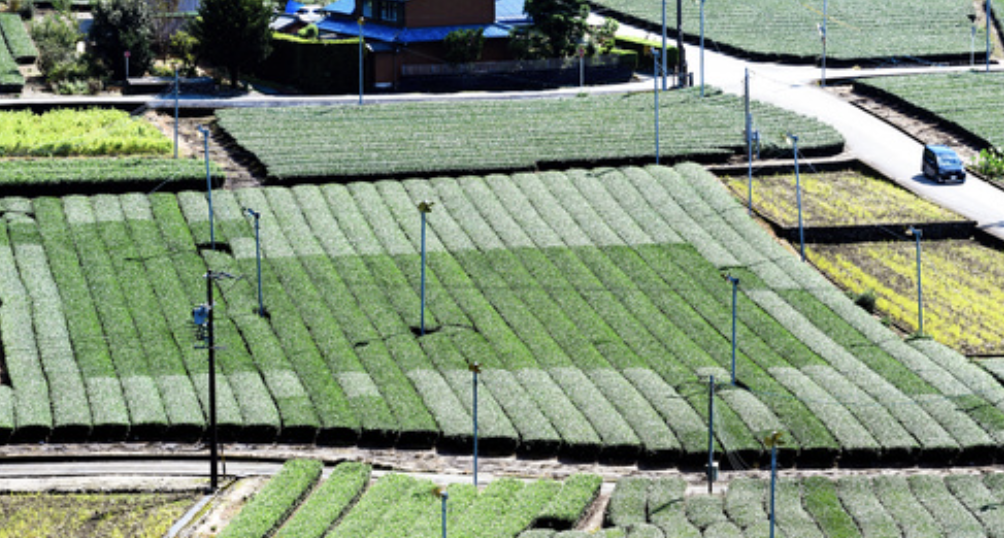The end of October. Tree leaves are already turning yellow and red. And it is almost the end of tea harvesting this year.
With rising costs of fuel and fertilizers for the tea producers the year has been hard. Hence, to support tea producers, Shizuoka Prefecture has designed a subsidy plan. It targets the production of rough tea – aracha and will cover up to a half of the fuel price increase experienced between April and October. The total budget is 940 mln. yen and the application is open until the end of November.
In Saitama Prefecture, Iruma City has enacted a Sayama Tea Lovers Ordinance. It encourages Sayama tea producers to promote tea culture and recommends that residents drink one cup of tea a day. The ordinance also includes the city’s support for research on Sayama tea and it dedicated the first Sunday of June as Sayama tea day.
Kyoto City, on the other hand, has recently been criticized for public overspending, including a tea room at the City Hall that came with a price tag of 36mln yen. Yokkaichi City in Mie Prefecture also made news, as it has been revealed that one of the tea agricultural cooperative employees embezzled funds in 2018, and authorities were not notified. Another city in Mie Prefecture – Matsuzaka was also featured, but due to the tea field art. To highlight the regional specialty – Matsuzaka beef, an image of the cow was created on the surface of the tea farm.
October was also a month for several tea events. The Uji Tea Festival was held on 2nd October, but due to the pandemic the size was reduced again. In November, though, Uji will hold the National Tea Festival that comes along with the National Tea Competition held in Kyoto earlier this year. The festival will include the awards ceremony and many different tea activities.
In addition to that, this month in Kyoto City a special exhibition on tea ceremony utensils opened at the Kyoto National Museum. The exhibition has 27 national treasurers on display and will run until the beginning of December. In Miyakonojo City, Miyazaki Prefecture there is also a special exhibition displaying documents and tea ceremony utensils gathered by the Shimazu family.
October was also an active month for tea ceremonies. On 7th October Omotesenke tea school held a special tea ceremony at Daitokuji temple commemorating the 350 years since the passing of its 4th Iemoto. On 12th October, Urasenke tea school held a tea ceremony in Kashihara shrine in Nara Prefecture. It was the first time in 32 years that Urasenke Iemoto himself performed the tea ceremony. And on 15th October, the Grand Tea Ceremony that started in Tokyo in 2020 was held in Tottori. In the coming year it is planned in Fukuoka.
Among the new products Suntory has recently released a new bottled drink called ‘Kyoto Lemonade’, that combines the flavors of lemon, honey and tea, provided by Fukujuen. This may mark a shift in the bottled tea drink industry from pure teas to flavored drinks. In Saga Prefecture new Ureshino Tea Extract Powder, came on sale as well. It is produced in a way that it easily dissolves in water and has no residue. In Saitama Prefecture an Italian restaurant has also started selling frozen pizzas using Sayama tea.
As the busy time of tea production is almost over, perhaps there will be more time for experimentation and new product creation.
The article is based on the Japanese media articles:
- Crispy, slightly green, frozen pizza using Sayama tea… “Enjoy the local flavor”, Yomiuri Shimbun 2022.10.03
- Uji Tea Festival to thank the “founder of tea” and pray for prosperity, Mainichi Shimbun 2022.10.04
- Kyoto City Hall’s “too luxurious” tea ceremony room is not being used, Kyoto Shimbun 2022.10.07
- A memorial tea ceremony for the 350th anniversary of the death of the 4th Iemoto of Omotesenke, Daitokuji Temple, Kyoto, Yomiuri Shimbun 2022.10.07
- The spirit of the tea ceremony, passed down to the present day, and the greatest treasures in one place…Four head families of Kyoto also exhibited, Yomiuri Shimbun 2022.10.08
- First Urasenke Tea Ceremony in 32 years at Kashihara Jingu Shrine, Yomiuri Shimbun 2022.10.13
- Shizuoka Prefecture to begin accepting applications for fuel subsidies for tea farmers through Nov., Nikkei Shimbun 2022.10.14
- Sayama-cha Love Ordinance” goes into effect in Iruma City, Saitama, Nikkei Shimbun 2022.10.14
- A grand tea ceremony recreating the banquet that gave rise to the word “Reiwa” in Tottori, the site of the final poem in the Manyoshu (The Anthology of Myriad Leaves), Asahi Shimbun 2022.10.16
- Iyemon is “out of tea”? Why “Iyemon” is “getting away from tea”?, Mainichi Shimbun 2022.10.18
- Just dissolve authentic Ureshino tea Extract Powder, Yomiuri 2022.10.19
- Embezzlement at Mie Tea Agricultural Cooperative: Mie Prefecture “highly regrettable” and instructed to submit a written report, Asahi Shimbun 2022.10.21
- This is How the Tea Ceremony Was Introduced Special Exhibition at the Miyakonojo Shimazu Folklore Museum, Asahi Shimbun 2022.10.26
- National Tea Festival to promote Uji tea through hands-on experience, Mainichi Shimbun 2022.10.28
*Image source: Asahi Shimbun

